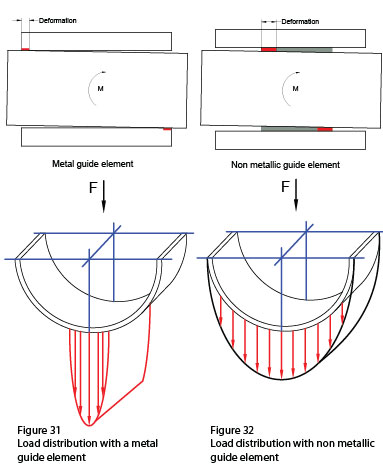Guide Elements Operating Principles
- Home
- Guide Elements
- Guide Elements Operating Principles
Guide elements do have very important role for sealing elements to function properly in hydraulic and pneumatic systems. The transverse forces in hydraulic and pneumatic cylinders will cause momentums to occur inside the system.
There is need for guide elements to absorb such momentums in order to prevent the damaging factors to the sealing elements as well as to the system. Guide elements are installed in the piston and gland caps to absorb the radial forces-moments in the system preventing metal to metal contact with piston to the cylinder bore and rod to the gland cap. The elastic deformation of the components under the load (deflection of the guide element, bending of the shaft, stretching of the cylinder) creates an angular deviation between the piston and bore or rod and gland cap. Calculation based on the parallel axis generally gives wrong conclusions. In this respect it is vital to take this into consideration when calculating the guide elements.
Nowadays most of the cylinders have non metal guide elements instead of metal guide elements. Non metallic guide elements do have very low friction coefficient, high bearing capacity, excellent cushioning effect and able to work in vibrated systems. They are easily installed into open grooves, prevents hydrodynamic pressure and diesel effect, able to absorb the angular deviations between the piston-bore and rod-gland cap and economical guiding solution which make them used widely in the applications.
During the application of the non metallic guide strips the gap (k) should be checked according to our catalogue information prior to installation to prevent hydrodynamic pressure and to increase the life-span.

